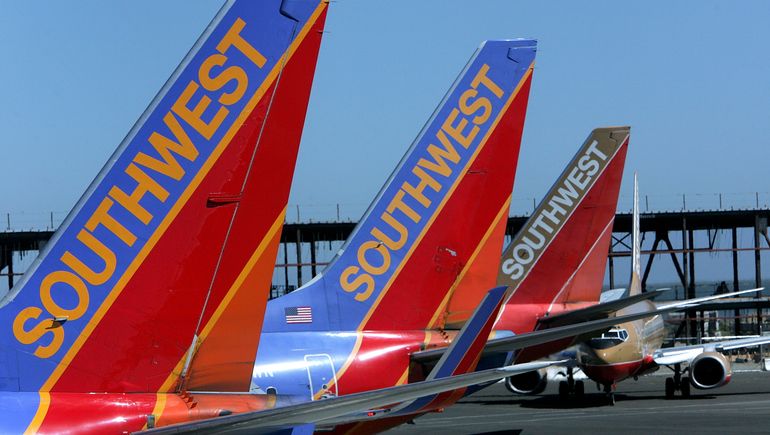Bad weather was the immediate catalyst for the disruptions Southwest Airlines experienced at the start of the December holiday travel period. But it was the company’s shortsighted tech strategy that left the third-largest domestic carrier vulnerable to prolonged operational chaos.
IT glitches are a common headache for tech-dependent businesses, especially when they impact customers and make headlines. Near shutdowns of business operations are far more costly, with severe and sometimes lasting repercussions.
Southwest reported revenue losses of $800 million and is now the subject of a U.S. Department of Transportation investigation that could result in fines and more bad publicity.
Adding comic insult to injury, “Saturday Night Live” lampooned the carrier’s IT in a faux PSA that boasted, “We are finally upgrading our entire computer system to 2008 Dell Computers.”
It’s easier to laugh — and to reflect — now that operations are restored and the company has pledged to address technological shortcomings. Southwest’s on-time performance since the start of the year has been second only to American Airlines, Jordan said during the earnings call.
As with any systemic operational breakdown, there are lessons that have surfaced in its aftermath. Here are three takeaways from Southwest’s IT failure:
CX investments are great, but operations failures don’t promote customer satisfaction
Southwest has invested in technology — up to $1 billion per year, Jordan said during the earnings call.
Much of that spending was directed to outward-facing improvements targeted in the $2 billion in digital customer experience upgrades announced in May. That left backend IT underserved.
In post-crisis mode, Southwest is updating SkySolver, a GE Digital crew scheduling application, which was unable to manage the volume of reassignments caused by Winter Storm Elliott, Southwest’s COO Andrew Watterson said during the earnings call.
Southwest also had not kept up with advances in data and analytics, according to Doug Laney, data expert and innovation fellow at consulting firm West Monroe. While other major carriers quickly reassigned crews, rerouted passengers and rebooked flights, Southwest struggled to restore basic operations.
Southwest had traditionally excelled at providing good CX and reasonable fares, Bobby Cameron, VP and principal analyst at consulting firm Forrester, told CIO Dive.
“Southwest was creative,” said Cameron. “They focused very much on helping the customer and their employees succeed, which generated a great deal of loyalty.”
Despite those investments, the brand’s loyalty has been tested, in part because Southwest prioritized short-term CX gains instead of long-term tech investments, according to a Jan. 11 blog post by Christopher Gilchrist, principal analyst at consulting firm Forrester.
The bill for tech debt rarely arrives on good day
Legacy applications, proprietary solutions and amassed technical debt are rife in the aviation industry, according to a November report by analyst firm Gartner. Southwest’s problems with SkySolver are just one example.
While Watterson did not blame the application’s manufacturer, he said that the winter storm conditions were an unanticipated “use case that nobody defined for them.”
Systems tend to fail when stressed, not when conditions are optimal. Waiting for a bad situation to pay down technical debt is a high-risk strategy.
“Southwest was a standout from the other U.S. majors, because of that delinquency on paying down technical debt,” Cameron said.
“The other major airlines were able to recoup in the wee hours of the morning,” Cameron said, minimizing disruptions.
With Southwest, poor technology led to an escalating crisis.
Lacking a mobile app, crews had to call in manually to report their locations, which required shutting down extraneous communications.
“Cell phones have been around for a long time,” Cameron said. “Being late would have been five or six years. This was beyond late, and it wasn’t just cellphone apps — it was scalable computing.”
Dashboards and automation tools are only as good as the data they’re fed
Lacking crew location data, Southwest’s automated assignment system was unable to function. The carrier has responded with a number of quick fixes, including a new operations dashboard announced during the earnings call.
But dashboards are only as good as the data they’re fed.
“A telltale sign of a business poorly positioned to compete by becoming more data driven or digitally transforming is one that’s failing to adopt advanced analytics, and one that’s overly excited by dashboards,” Laney told CIO Dive.
Southwest, like many other airlines, had implemented dashboard capabilities in recent years. The operational dysfunction began with missing data, not a lack of tools.
“I saw an article where they boasted about implementing dashboards, giving more people access to data, democratizing data,” Laney said. “Dashboards are interesting, they can help with strategy, but not with operational problems.”



